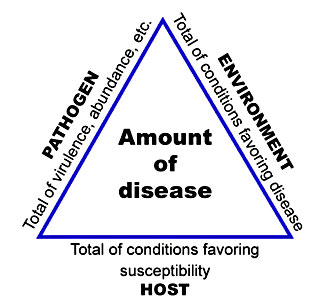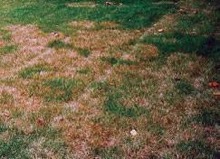Prevent your Fescue from Browning!

Fescue lawns in NWA can be beautiful, especially during the spring and fall. Unfortunately, in the summer when Bermuda is growing like wildfire, fescue struggles to survive. One major contributor to the summer decline of fescue lawns is brown patch, a disease caused by a fungus (Rhizoctonia Solani).
When fescue starts to shut down in the summer, the conditions are perfect for brown patch to thrive. Temperatures in the 80’s and 90’s and night time temperatures above 65 degrees is prime for brown patch. Brown patch also thrives in high humidity. Often, we hear customers say that fescue requires a lot of water in the summer time or “I’m watering every day, but I just can’t keep it green.” Unfortunately, overwatering is contributing more to the disease issues than anything else. Overwatering creates an environment that has constant humidity. This combined with the warm summer temperatures is perfect for disease.
 If left unchecked, the disease can spread across large areas and result in death of the grass. Simply mowing will not get rid of the disease because it survives in the thatch, top layer of soil, and the infected tissue. When selecting fescue sod, choose a variety that is more tolerant of disease. If you are using our services, we avoid the use of nitrogen fertilizers in the summer months, as this can contribute to the disease. Remember to irrigate deeply and infrequently.
If left unchecked, the disease can spread across large areas and result in death of the grass. Simply mowing will not get rid of the disease because it survives in the thatch, top layer of soil, and the infected tissue. When selecting fescue sod, choose a variety that is more tolerant of disease. If you are using our services, we avoid the use of nitrogen fertilizers in the summer months, as this can contribute to the disease. Remember to irrigate deeply and infrequently.
We highly recommend the use of preventative fungicides beginning when conditions favor the onset of the disease. If you want your fescue to stay healthy and look good through the summer months, it may require 2-3 fungicide applications from June-August.
